The United States has been built and shaped by rebellions. These images show that there's strength in numbers.
12 Iconic Photos from Protests That Changed American History
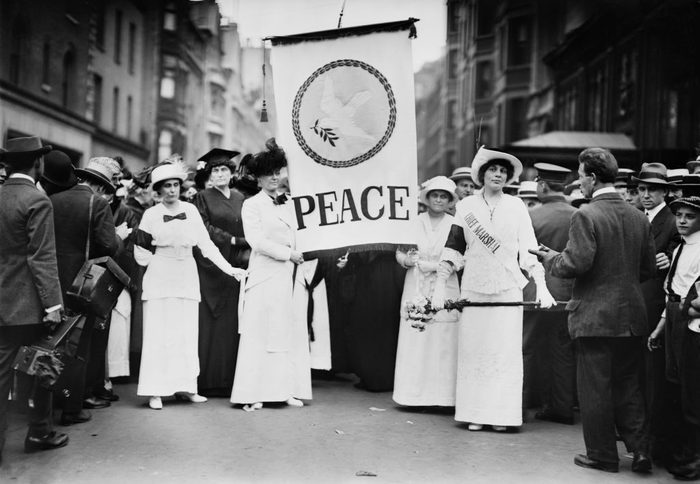
Progress through protesting
Within a few days, our news cycle promptly switched from nonstop coverage of the COVID-19 pandemic to the demonstrations supporting racial justice, following the police killing of George Floyd on May 25 and Breonna Taylor on March 13. There are ongoing protests in all 50 states, meaning that this isn’t a geographically isolated concern: It’s something that people across the country feel strongly enough about to leave their homes during a pandemic to take to the streets to make their voices heard. But this is hardly the first time America has turned to protest to bring about change. In fact, given the country’s origin story—rebelling and eventually going to war with Great Britain over independence—it’s an integral part of American political culture. From the Boston Tea Party (yes, that was a protest) to the New York City draft riots during the Civil War to the suffrage movement to demonstrations in favor of civil rights and equality regardless of race, gender, or sexual orientation, America has a rich history of rising up. There have been photographers (or illustrators) who have captured the images of these events. Here are 12 iconic photos from protests that changed American history.
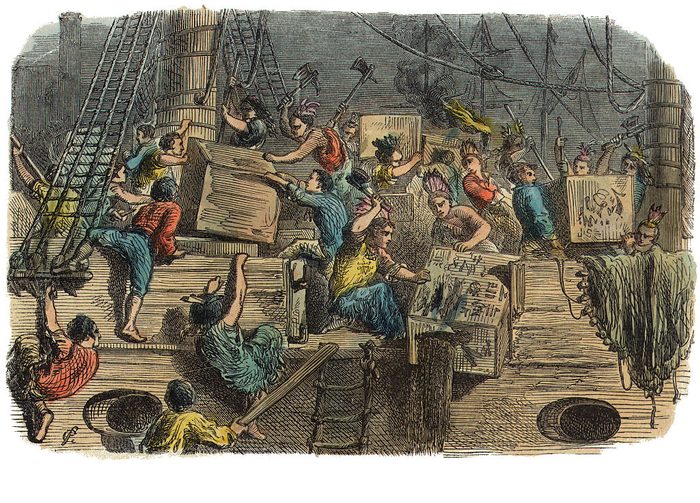
Boston Tea Party
The Boston Tea Party is such a well-known part of the American independence narrative that it can be easy to forget that it was a protest. Back in the early 1770s, the British put a tax on the tea they sold to American colonists but didn’t give the colonies a seat in Parliament. This didn’t sit well with the colonists (it was that whole “No taxation without representation” situation), so they smuggled their tea in. That worked until May 1773, when the British gave the East India Company a monopoly on tea in America, making British tea cheaper than the smuggled tea. A boycott of British tea began in Philadelphia in October 1773, and then two months later, the British shipped 342 chests of tea. American colonists—dressed as Native Americans—dumped the tea into Boston harbor as an act of protest. The British weren’t pleased with that and passed the Coercive (or Intolerable) Acts in April 1774, which both took home rule away from Massachusetts, and forced colonists to board British troops in unoccupied buildings. Upset by this as well, these new laws continued the chain of events leading up to the American Revolution, starting with the formation of the First Continental Congress in September 1774. Want to learn more about the founding of the country? Here are 18 history lessons your teacher lied to you about.
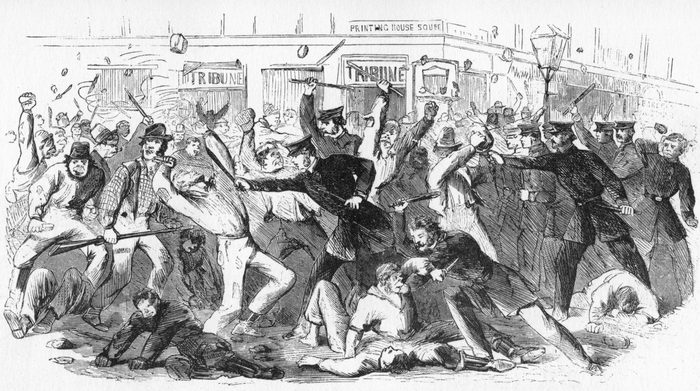
The Civil War Draft Riots
When the Emancipation Proclamation took effect on January 1, 1863, it made some white workers in cities, including New York, concerned that they’d be competing for work with the formerly enslaved people. Then in March 1863, the national laws surrounding conscription—or being drafted to the army—were changed: All male citizens between ages 20 and 35 and all unmarried men between 35 and 45 years of age could potentially be drafted. Draftees were chosen via a lottery system, but anyone who could afford to pay $300 or hire a substitute to go to war in their place was able to get out of it. At the time, Black Americans were not considered citizens and therefore were exempt from the draft. As a result, a series of violent protests took place over five days in July 1863 which became known as the Civil War Draft Riots. What started as protests turned into race riots, with large groups of Irish immigrants attacking Black Americans throughout the city, ultimately leading to more than 100 deaths and 2,000 injuries. Following the riots, the demographics of New York City changed, with many Black Americans relocating from Manhattan to Brooklyn.
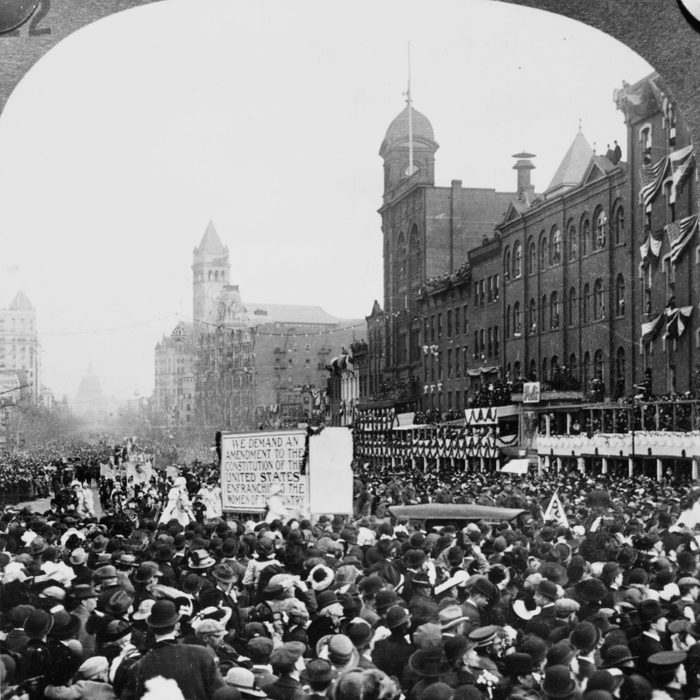
The 1913 Suffrage Parade
As we prepare to celebrate the 100th anniversary of the 19th amendment, it’s a good time to reflect on how long it took to get there. One of the major events in the fight for women’s right to vote took place on May 3, 1913, when thousands of women—including well-known suffragists like Jane Addams, Alice Paul, and Rev. Anna Howard Shaw—marched along Pennsylvania Avenue in Washington, D.C., the day before Woodrow Wilson’s presidential inauguration. What started as a peaceful march for suffrage turned violent when male spectators disrupted the march and began attacking the women, leaving approximately 100 injured and sent to a local hospital. It would take several more years, but women (well, white women) were granted the right to vote in 1920. Don’t miss these 13 rarely seen photos of the first women voters 100 years ago.
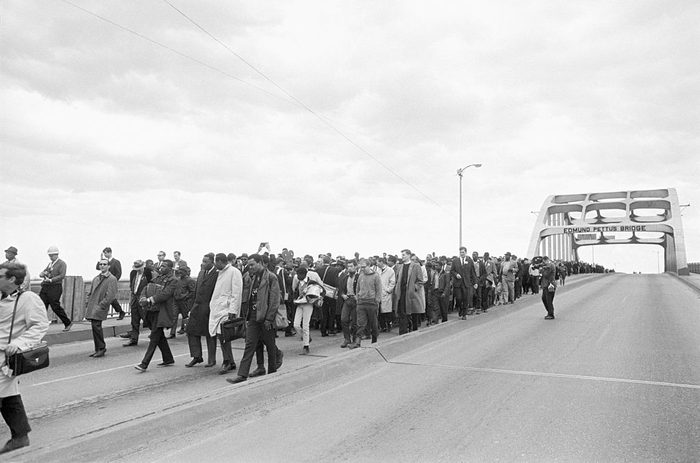
The Civil Rights March from Selma to Montgomery, Alabama
In March 1965, a group of people planned to march approximately 50 miles from Selma, Alabama to Montgomery, Alabama (the state capital) in support of granting all Black Americans the right to vote. On March 7, approximately 600 people assembled at a church in downtown Selma, prayed, and began walking silently, two-by-two through the city streets. As the marchers, led by Dr. Martin Luther King, Jr., were leaving Selma, approximately 150 Alabama state troopers and sheriff ‘s deputies stopped the protesters at the end of the Edmund Pettus Bridge and ordered them to disperse, giving them a two-minute warning. After one minute and five seconds, the authorities began attacking the marchers with clubs, bullwhips, and tear gas, fracturing future Congressman John Lewis’s skull. Following several more months of protests and violence, President Lyndon B. Johnson signed the Voting Rights Act of 1965. Find out why desegregation didn’t put an end to racism in America.
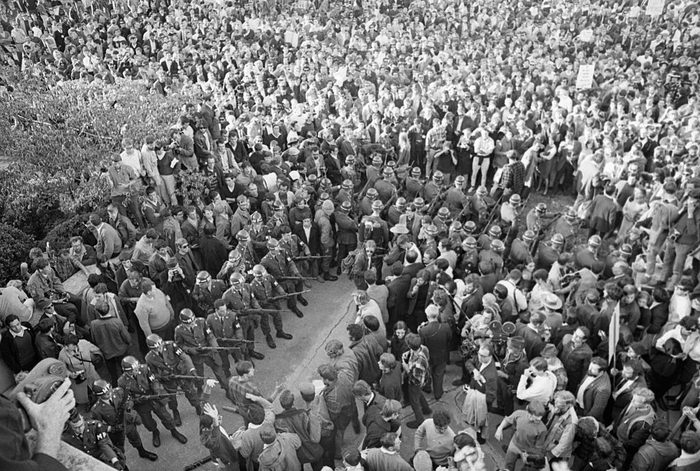
The Pentagon Riot of 1967
When the United States first sent troops to Vietnam in 1965, it was not met with universal support. Growing tensions ultimately led to the first national demonstration against the war in Washington, D.C., on October 21, 1967. An estimated 100,000 people turned up for the march to the Pentagon, with some scaling the walls and forcing their way in. About a dozen marchers made it inside the building. There was a violent clash between the protesters and the military police guarding the Pentagon, resulting in 47 injuries and 682 arrests. Though it would be nearly seven more years before the war ended, this protest set the stage for the many demonstrations to follow.
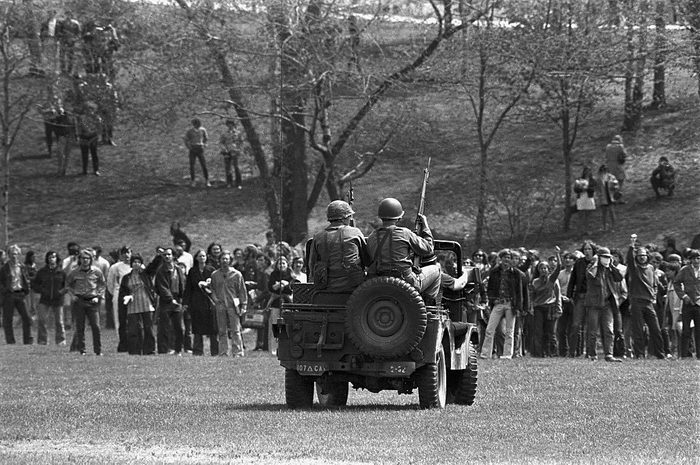
Kent State Shootings
On May 2, 1970, the Ohio National Guard was called in to respond to a protest against the Vietnam War at Kent State University in Ohio. There were a number of confrontations between protesters and the National Guard over the next three days, including an ROTC building being set on fire. On May 4, approximately 3,000 people gathered on the Kent State campus, protesting both the war in Vietnam, as well as the presence of the National Guard. The guardsmen told the protesters to disperse, and when they didn’t the National Guard first used tear gas, and then fired into the crowd for 13 seconds. That left four students dead and nine injured. This event sparked protests across the country and turned the tide of public opinion against the Vietnam War.
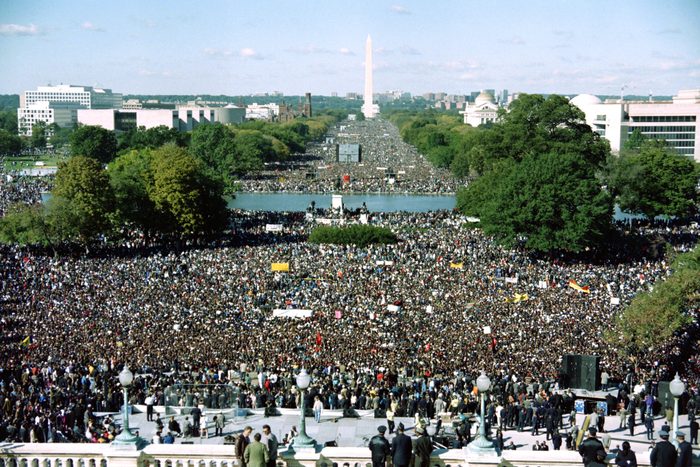
Million Man March
On October 16, 1995, Nation of Islam leader Louis Farrakhan organized a march in Washington, D.C., that drew hundreds of thousands of African-American men from across the country. Known as the Million Man March, the aim of the event was to discuss pressing issues in the Black American community, and the roles that Black men play in it. There were several notable speeches throughout the day, including ones by Farrakhan, Queen Mother Moore, Betty Shabazz, Dorothy Height, and Maya Angelou. Civil rights icon Rosa Parks also spoke, paying tribute to her husband Raymond, and urging the assembly of African-American men “to make changes in their lives for the better,” and pledged to “always work for human rights of all people.” But the event wasn’t without controversy. President Bill Clinton opted not to attend, and gave a speech on race relations the same day, criticizing Farrakhan. Though there were problems with inclusivity at the original march—including Farrakhan telling women to stay home and take care of the children—the Million Man March has been credited with laying the groundwork for more inclusive movements for racial justice, such as Black Lives Matter.
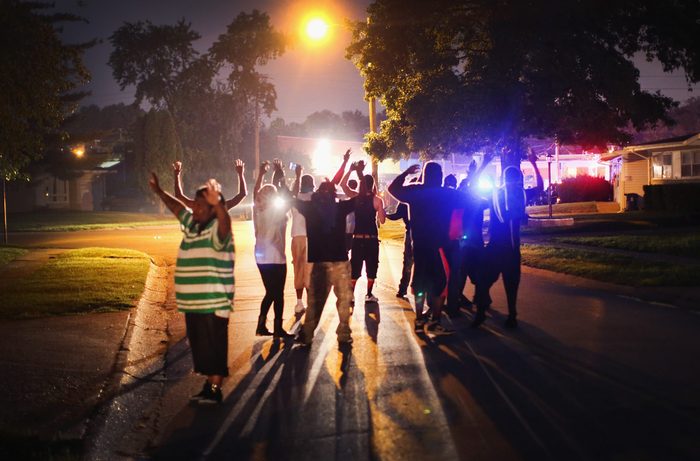
The Ferguson Uprising
On August 9, 2014, Michael Brown, an unarmed 18-year-old was shot and killed by Darren Wilson, a white police officer, in Ferguson, Missouri, just outside St. Louis. Though demonstrations soon spread throughout the city and later the country, the unrest was centered in Ferguson, where police responded to the protesters with tear gas. Though a grand jury didn’t indict Wilson in November 2014, the Department of Justice later conducted an investigation into the policing practices of the Ferguson Police Department. The investigation concluded in March 2015 when the DOJ determined that the Ferguson Police Department had, indeed, engaged in misconduct; specifically, discriminating against African American citizens.
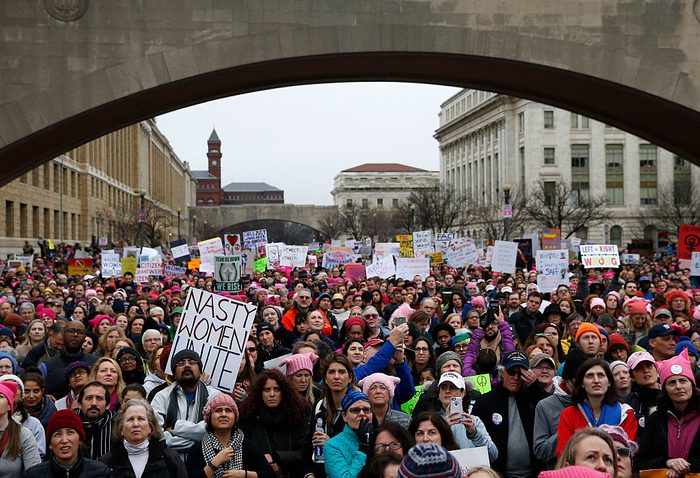
The Women’s March on Washington
On January 21, 2017, the day after the inauguration of President Donald J. Trump, people around the world gathered on all seven continents to march in support of women’s rights. During his presidential campaign, Trump made several derogatory remarks about women, leaving large portions of the American electorate concerned that they would see an erosion of their human rights during his administration. The largest march occurred in Washington, D.C., where nearly 500,000 people flooded the nation’s capital—making it approximately three times larger than the previous day’s inauguration. Demonstrations have continued each January since that year, serving as an annual reminder that women’s rights are human rights. Find out more about these 13 moments that changed women’s history forever.
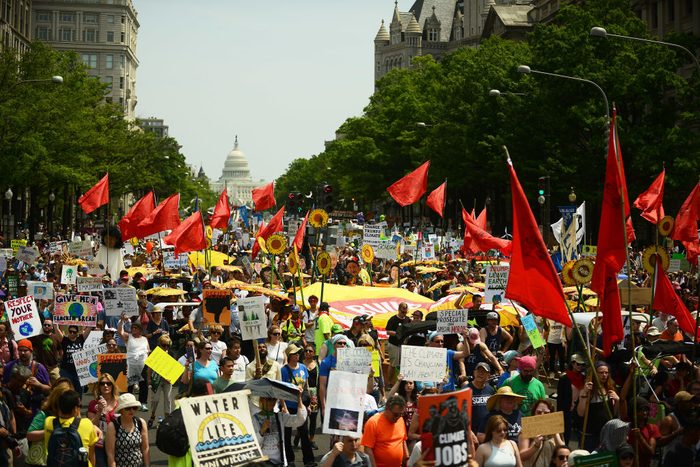
People’s Climate March
On April 29, 2017, tens of thousands of people marched from the nation’s capital to the White House to protest President Donald Trump’s environmental policies on his 100th day in office. Known as the People’s Climate March, other demonstrations took place across the country to demand a clean energy economy. At that point, the Trump administration had already started reversing President Barack Obama’s environmental measures. As it turns out, weather played a major role in these marches about climate change. The temperature in Washington, D.C., reached nearly 90 degrees, while it snowed in other protests around the country, like the one in Denver. Three years into his administration, Trump still claims not to believe in climate change.
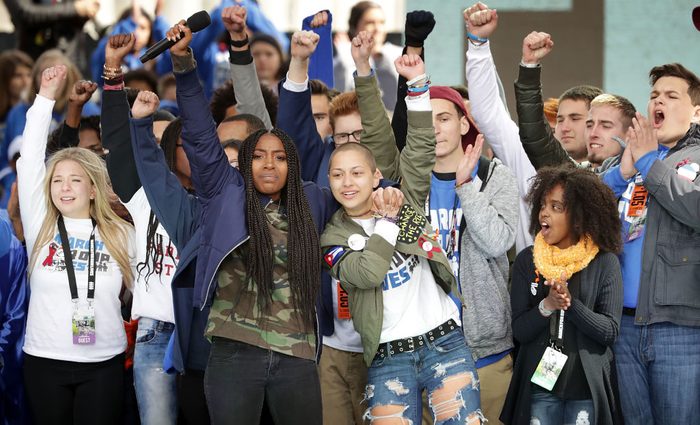
March for Our Lives
Though many consider the Columbine shootings in 1999 as the beginning of the modern era of school shootings, America’s history of these violent events goes back to at least 1840. But when a gunman opened fire with a semi-automatic rifle at Marjory Stoneman Douglas High School in Parkland, Florida on February 14, 2018, killing 17 people, it was a turning point. In the days following the shooting, a group of students from the high school organized the largest single-day protest against gun violence in history: the March for Our Lives rallies on March 24, 2018. One of the most powerful moments of the day came when Emma Gonzalez (center), a student at the high school took the stage and stood silent for four minutes, the same length of time as the gunman’s rampage. The marches didn’t result in sweeping gun control legislation, but they did demonstrate how effective student-led movements can be.
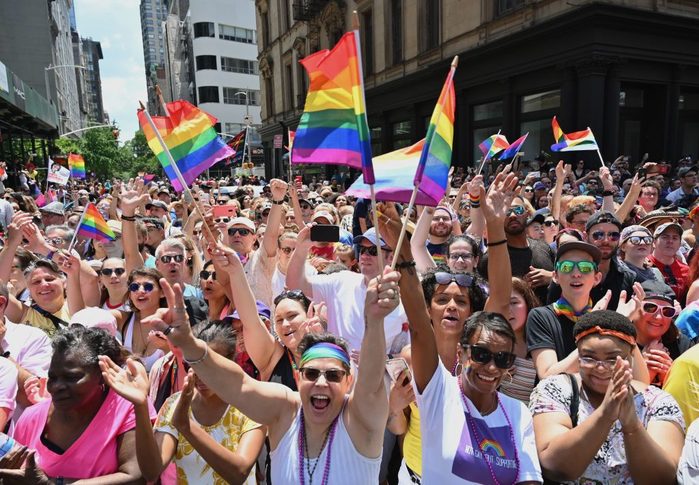
The 50th Anniversary of the Stonewall Riots
In late June and early July 1969, a series of demonstrations occurred in and around the Stonewall Inn, a gay bar in New York City’s Greenwich Village that had become the target of police raids. The situation escalated in the early morning hours of June 28, 1969, during another police raid. Though no one was killed during the Stonewall riots, many were injured as a result of police violence. Within weeks of the events in lower Manhattan, other demonstrations took place around the country. While there had been previous demonstrations for LGBTQ+ rights, they were primarily covert, grassroots campaigns. After Stonewall, the fight for LGBTQ+ rights became larger and more public. A prime example was the NYC Pride March in 2019 commemorating the 50th anniversary of the Stonewall Riots. Read on to learn about 13 LGBTQ+ heroes you didn’t learn about in history class.
For more on this important issue, see our guide to the Fight Against Racism.




















